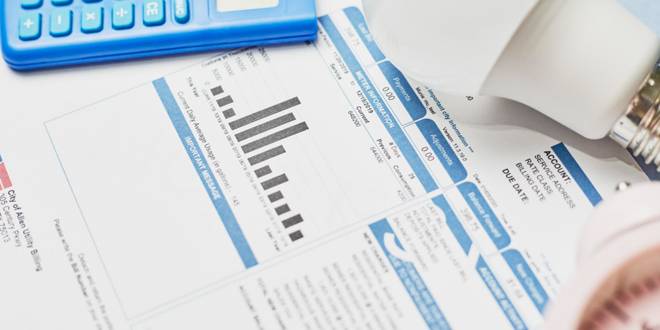
Summer is a time for fun in the sun, but it can also be a time for skyrocketing energy bills. Cranking up the AC can keep you cool, but it can also leave your wallet feeling hot. If you’re looking for ways to stay comfortable and save money this summer, you’ve come to the right place. In this blog post, we’ll share 10 summer energy-saving tips that will actually make a difference. From simple behavior changes to smart upgrades for your home, these tips will help you beat the heat and keep your cool (and your cash) all summer long.
1. Maximize Use of Programmable Thermostats
In the quest to conserve energy and reduce monthly bills during the sweltering summer months, one of the most effective strategies is the optimization of your home’s thermostat settings. Programmable thermostats, a marvel of modern technology, offer a convenient and efficient way to manage your home’s temperature without sacrificing comfort. By automating your HVAC system to operate around your schedule, you can ensure that cooling is provided when needed and energy is saved when it’s not.

The Ideal Settings for Savings
To strike the perfect balance between comfort and efficiency, setting your thermostat to 78°F (26°C) when you are home and raising it by 7-10 degrees when away or asleep can lead to significant savings on your energy bill. This minor adjustment capitalizes on the body’s natural adaptation to ambient temperatures while ensuring that cooling is not wasted in an empty home.
Smart Thermostat: A Game Changer
Upgrading to a smart thermostat introduces a new level of convenience and efficiency. These devices learn from your habits and adjust your home’s temperature settings accordingly, making them an excellent investment for energy-conscious homeowners. Moreover, with remote access through your smartphone, adjusting settings on the go becomes a breeze, ensuring that you return to a comfortably cool home every time.
2. Regular HVAC Maintenance Checks
The longevity and efficiency of your heating, ventilation, and air conditioning (HVAC) system heavily depend on regular maintenance checks. These checks are crucial, especially before the summer heat intensifies, to ensure that your system operates at its peak efficiency, providing cool air while minimizing energy consumption.

Importance of Professional Servicing
An HVAC system is akin to a car; without regular servicing, its performance can significantly diminish, leading to higher energy usage and costs. Professional maintenance includes cleaning the air filters, coils, and ducts, checking for any leaks or issues in the system, and ensuring that all components function correctly. These steps help prevent energy wastage and extend the life of your system.
The Role of Maintenance in Energy Conservation
A well-maintained HVAC system doesn’t have to work as hard to cool your home, resulting in lower energy consumption and costs. For instance, simply replacing a dirty, clogged air filter can improve your air conditioner’s efficiency by 5% to 15%. Regular checks also identify any potential issues early on, preventing costly repairs or replacements in the future.
3. The Benefits of High-Efficiency HVAC Systems
In the quest for a more comfortable and energy-efficient home during the hot summer months, upgrading to a high-efficiency HVAC system stands out as a game-changing decision. These modern systems are designed to provide optimal cooling and heating with significantly lower energy consumption than older models. Let’s dive into the advantages of making such an upgrade and how it aligns with our commitment to sustainability and efficiency.
Enhanced Energy Efficiency
High-efficiency HVAC systems operate with a greater Seasonal Energy Efficiency Ratio (SEER) and Energy Efficiency Ratio (EER) compared to standard models. These ratios measure the cooling output divided by the energy consumed, with higher values indicating better efficiency. By choosing a system with a high SEER and EER rating, you can achieve the same level of comfort in your home while using less energy, leading to lower utility bills and a reduced carbon footprint.
Cost Savings Over Time
While the initial investment in a high-efficiency HVAC system may be higher, the long-term savings on energy bills can be substantial. These systems are designed to use less electricity to produce the same cooling effect, making them a cost-effective choice over time. Additionally, many utility companies offer rebates and incentives for homeowners who upgrade to energy-efficient systems, further reducing the overall cost.
Improved Indoor Air Quality and Comfort
High-efficiency systems not only cool your home more effectively but also improve indoor air quality. They are better at controlling humidity levels and filtering out pollutants, which is especially beneficial for individuals with allergies or respiratory issues. Furthermore, these systems often come with variable-speed motors that ensure consistent airflow, reducing temperature fluctuations and enhancing overall comfort.

4. Utilize Ceiling Fans for Better Air Circulation
In the quest for a cooler, more energy-efficient home during the hot summer months, the strategic use of ceiling fans can play a pivotal role. Ceiling fans are an excellent complement to your air conditioning system, offering a cost-effective way to enhance the comfort of your living spaces without significantly increasing your energy bills. Here’s how leveraging ceiling fans can contribute to a cooler home and reduced energy consumption.
Enhancing Air Conditioner Efficiency
Ceiling fans work by creating a wind-chill effect that makes the room feel cooler than it actually is. This sensation allows you to set your thermostat a few degrees higher without compromising on comfort, leading to substantial energy savings over time. It’s important to remember that fans cool people, not rooms, by facilitating the evaporation of sweat on the skin. Therefore, it’s advisable to turn fans off in unoccupied rooms to save energy.
5. Seal and Insulate Your Home
Efficiently cooling your home during the hot summer months involves more than just adjusting the thermostat or turning on a ceiling fan. An often overlooked but crucial aspect of maintaining a comfortable and energy-efficient home is ensuring that it is properly sealed and insulated. This section delves into the significance of sealing leaks and enhancing insulation, strategies that collectively minimize energy waste and contribute to a significantly cooler indoor environment.
The Importance of a Well-Sealed Home
Cracks, gaps, and openings around windows, doors, and other areas of your home can lead to the escape of cool air, forcing your air conditioning system to work harder than necessary. This not only increases your energy consumption but also puts unnecessary strain on your HVAC system, potentially leading to premature wear and costly repairs. Sealing these leaks is a relatively simple and cost-effective way to improve your home’s energy efficiency and comfort.
Insulation: Your Home’s Thermal Barrier
Proper insulation acts as a thermal barrier, maintaining your desired indoor temperatures by keeping the summer heat out and the cool air in. Attics, walls, and floors that are well-insulated can significantly reduce the amount of heat that penetrates your home, lessening the workload on your air conditioning system and thereby reducing your energy bills. Insulation is particularly important in older homes that may not have been built with energy efficiency in mind.
Professional Assessment and Solutions
Determining the best sealing and insulation strategies for your home can be complex, involving a thorough assessment of your current insulation, the identification of leaks, and the selection of appropriate materials and methods for improvement. Our team of experts can provide a comprehensive evaluation of your home’s sealing and insulation needs, recommending tailored solutions that will enhance your comfort and reduce your energy consumption.
DIY Tips for Homeowners
While professional assessment and installation are recommended for the best results, there are simple steps homeowners can take to improve their home’s sealing and insulation:
- Window and Door Seals: Check for drafts around windows and doors. Applying weather stripping or caulking to seal these areas can be an effective DIY project.
- Attic Insulation: Ensure your attic has adequate insulation, as it is one of the primary areas where heat can enter your home.
- Ventilation: Proper ventilation in areas like the attic is crucial to prevent heat buildup and ensure efficiency in your cooling efforts.
6. Smart Use of Appliances and Lighting
During the summer months, the way you use your home appliances and lighting can have a significant impact on your indoor temperature and energy consumption. Making smart choices about these aspects of your daily life can help keep your home cooler and reduce your energy bills. Here’s how you can optimize the use of appliances and lighting for better energy efficiency.
Appliance Use in the Cooler Hours
Many household appliances generate a considerable amount of heat when in use. Running the dishwasher, oven, or dryer during the hottest parts of the day can add to the heat burden in your home, making your air conditioning system work harder and use more energy. To mitigate this, try to use heat-generating appliances during the cooler evening or early morning hours. This simple adjustment can help maintain a cooler home and contribute to energy savings.
Switch to Energy-Efficient Lighting
Traditional incandescent light bulbs are not only inefficient in terms of energy use but also produce a significant amount of heat. Switching to LED lighting can have a dual benefit for your home. LEDs use a fraction of the energy of incandescent bulbs and generate much less heat, helping to keep your home cooler. Making the switch to LED lighting is a straightforward and effective way to reduce both your energy consumption and your cooling needs.
Embrace Natural Light
Taking advantage of natural light can further reduce your reliance on artificial lighting during the day, which in turn can help keep your home cooler. Open curtains and blinds in the early morning and late afternoon to fill your home with natural light, but be mindful to close them when the sun is at its peak to prevent excess heat from entering your home. This balance will help you make the most of natural light without overheating your space.
Energy-Efficient Appliances
When it’s time to replace or upgrade your home appliances, consider choosing energy-efficient models. These appliances are designed to use less electricity and generate less heat, contributing to a cooler home environment and lower energy bills. Look for products with the ENERGY STAR label, which indicates they meet energy efficiency guidelines set by the U.S. Environmental Protection Agency.
The Role of Smart Home Technology

Smart home technology, such as smart plugs and energy monitors, can give you greater control over your appliances and lighting, allowing you to use them more efficiently. These devices can help you track energy consumption, remotely control appliances, and set schedules to minimize heat generation and energy use.
7. Invest in Energy-Efficient Windows
Upgrading to energy-efficient windows is a substantial but worthwhile investment that can enhance your home’s comfort and dramatically reduce your energy bills, especially during the hot summer months. Energy-efficient windows are designed to prevent heat gain inside your home, keeping it cooler and more comfortable without overworking your air conditioning system. Here’s how investing in these windows can benefit you and what to consider during the selection process.
Understanding Energy-Efficient Windows
Energy-efficient windows are equipped with special coatings and constructed with multiple layers of glass to reduce the amount of ultraviolet and infrared light that enters your home without compromising the amount of visible light that passes through. These windows can significantly reduce the heat gain inside your home during summer, thanks to their low-emissivity (low-E) coatings and quality framing materials, providing a cooler indoor environment and reducing the need for artificial cooling.
8. Landscaping for Natural Cooling
Strategic landscaping is not only about enhancing the curb appeal of your home but also plays a crucial role in natural cooling, making your living space more comfortable during the hot summer months. Thoughtful placement of trees, shrubs, and other plants can significantly reduce the amount of heat reaching your home, thereby reducing the reliance on air conditioning systems and leading to substantial energy savings. Here’s how you can use landscaping to achieve natural cooling.
The Power of Shade
Planting trees strategically around your home can block direct sunlight from entering through windows and heating up your interior spaces. Deciduous trees, which lose their leaves in the winter, are particularly beneficial as they provide shade during the summer while allowing sunlight to warm your home during the colder months. Planting trees on the south and west sides of your home can be especially effective in reducing heat gain.
9. Embrace Natural Ventilation
Natural ventilation leverages the movement of outdoor air through windows, doors, and other openings to cool and refresh the indoor environment. This process relies on the natural behavior of warm air rising and cool air settling to create airflow patterns that can help cool your home. When executed correctly, natural ventilation can significantly reduce the need for mechanical cooling systems, leading to substantial energy savings.
How to Maximize Natural Ventilation
- Open Windows Strategically: In the evening and early morning, when outdoor temperatures are cooler, open windows on opposite sides of your home to create a cross-breeze that encourages cooler air to flow through your living spaces.
- Use Window Treatments Wisely: During the day, use shades, blinds, or curtains to block direct sunlight and reduce heat gain. At night, opening these window treatments can help facilitate the entry of cool air.
- Consider the Direction of Wind: Understanding the prevailing wind direction in your area can help you decide which windows and doors to open to maximize airflow through your home.
Take Action Today! 🌟

Ready to slash your energy bills and boost your home’s comfort? JR Michalski Heating & Air Conditioning is here to help! 🏡💡 From high-efficiency HVAC installations to custom insulation solutions, let us elevate your summer living experience. Act now—explore our services and financing options to make this summer your coolest yet! 🌬️☀️ Contact us today!

